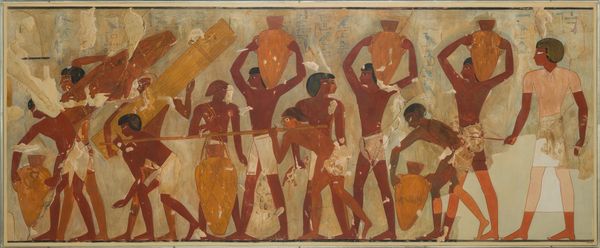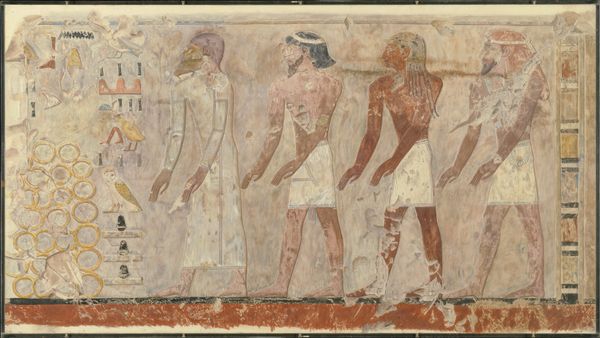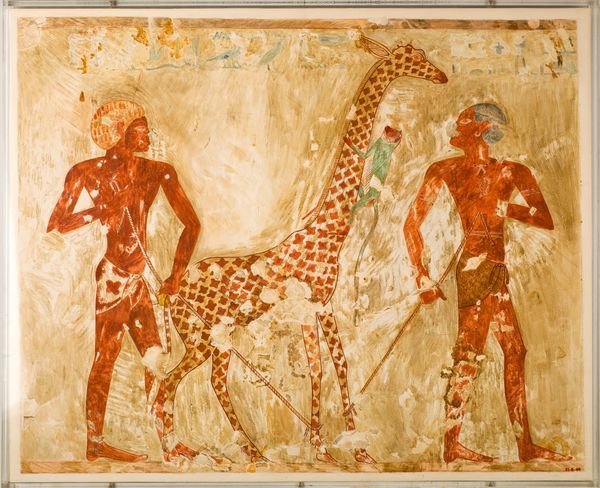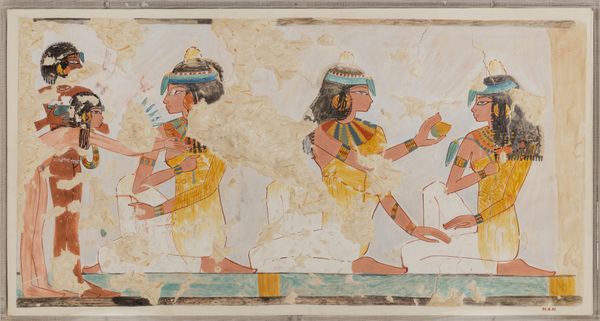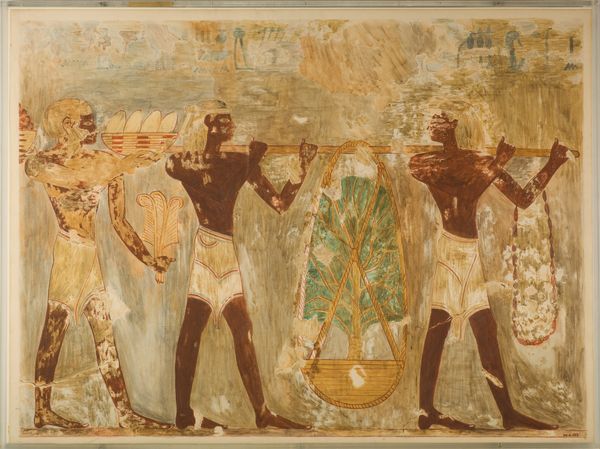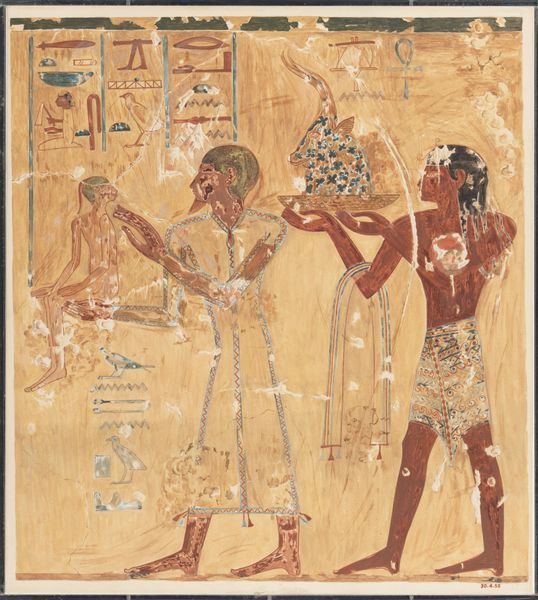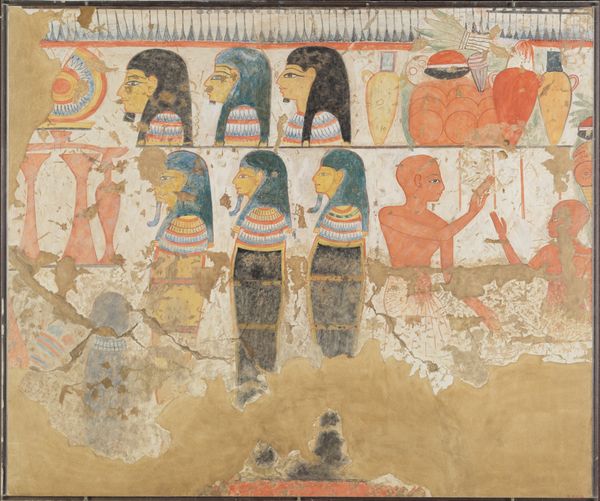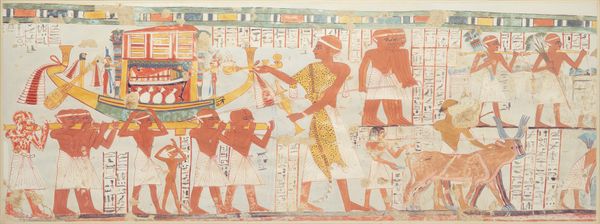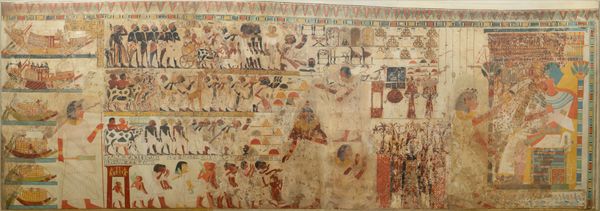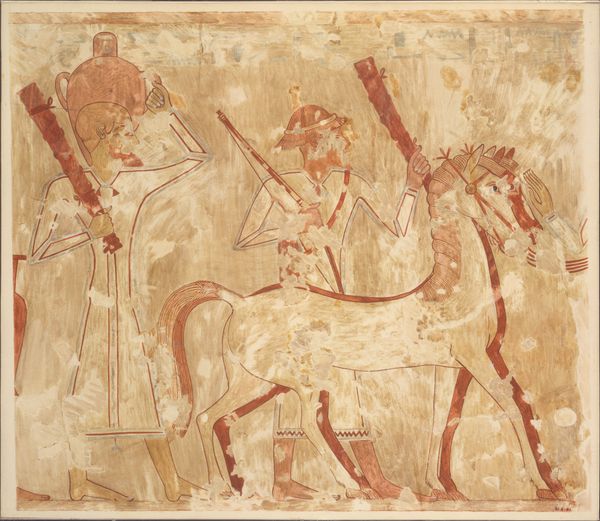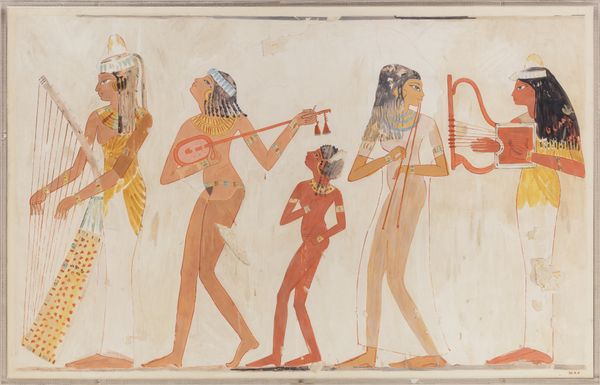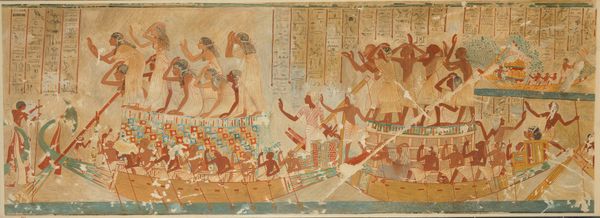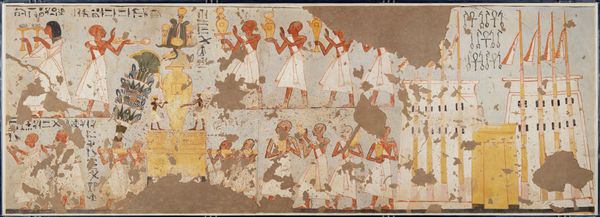
Facsimile painting from the tomb of Rekhmire 1479 BC
0:00
0:00
tempera, painting
#
water colours
#
narrative-art
#
tempera
#
painting
#
landscape
#
ancient-egyptian-art
#
figuration
#
oil painting
#
egypt
#
underpainting
#
ancient-mediterranean
#
men
#
history-painting
Dimensions: Facsimile: H. 45.5 cm (17 15/16 in.); W. 72 cm (28 3/8 in.) scale 1:1 Frame: H. 48.7 cm (19 3/16 in.); W. 75.3 cm (29 5/8 in.)
Copyright: Public Domain
Here we see Nina de Garis Davies’ facsimile painting from the tomb of Rekhmire, now at the Metropolitan Museum. The procession of figures carrying offerings is rich with symbolism. The animals—goats, gazelles, and even a leopard—are not merely decorative; they represent tribute and abundance, reflecting the power and wealth of the deceased. Consider the ancient Egyptian’s profound connection to the animal world. The leopard, often associated with royalty, is an interesting case: it transcends geographical and temporal boundaries. From prehistoric cave paintings to its modern-day symbolic appearance as a fashion statement, the leopard embodies power, ferocity, and the untamed aspects of nature. The act of carrying offerings is deeply rooted in the human psyche; it speaks to the need for appeasement, respect, and the hope for continuity. Such gestures evoke powerful emotions, engaging viewers on a subconscious level. We are reminded that these symbols and rituals possess a life of their own, evolving as they resurface in different eras and cultural contexts.
Comments
No comments
Be the first to comment and join the conversation on the ultimate creative platform.
